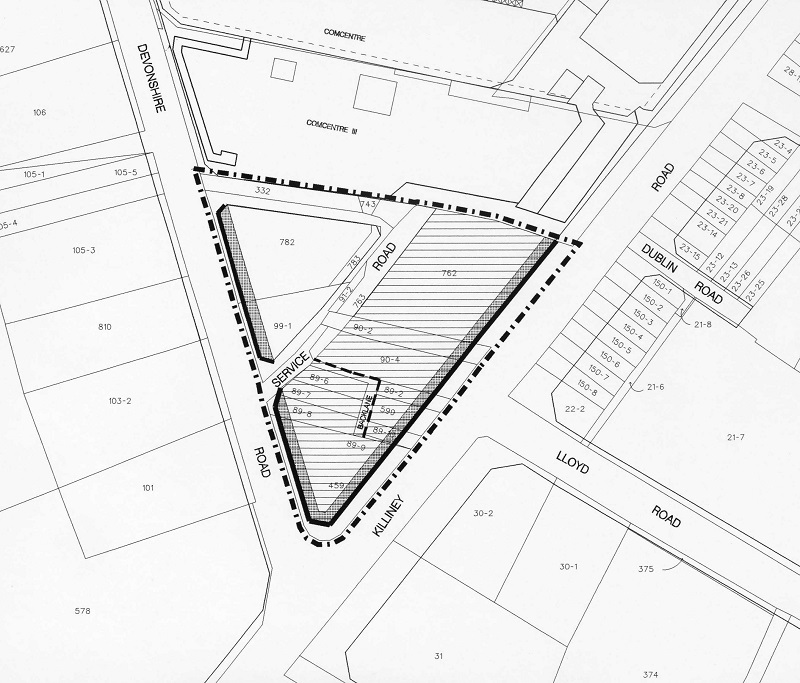Block plan
A block plan usually shows the siting of buildings as blocks laid out on maps of the surrounding area. A range of standard mark ups can be used to depict boundaries, roads and other details.
Depending on the size of the project, typical scales of block plans are:
- 1 : 2500
- 1 : 1250
- 1 : 500
It is common for the term ‘block plan’ to be used interchangeably with ‘site plan’. They are both similar in that they illustrate the development site along with the position of the proposed building(s), as well as any access roads, vegetation, utilities, and so on. They typically indicate the development site and access in red outline, as well as any other land owned by the developer in blue outline.
However, a site plan generally shows in more detail the contents and extent of the site for an existing or proposed development, whereas a block plan shows less detail of the site and more of the surrounding area. In planning applications, block plans can help the local authority determine the possible impacts that the proposed project may have on the wider area.
If it is a large site or if a wider indication of the impact on the surrounding area is necessary, then a location plan may be prepared, identifying where the site is, but giving little detail for the development itself.
[edit] Related articles on Designing Buildings
Featured articles and news
Amendment to the GB Energy Bill welcomed by ECA
Move prevents nationally-owned energy company from investing in solar panels produced by modern slavery.
Gregor Harvie argues that AI is state-sanctioned theft of IP.
Heat pumps, vehicle chargers and heating appliances must be sold with smart functionality.
Experimental AI housing target help for councils
Experimental AI could help councils meet housing targets by digitising records.
New-style degrees set for reformed ARB accreditation
Following the ARB Tomorrow's Architects competency outcomes for Architects.
BSRIA Occupant Wellbeing survey BOW
Occupant satisfaction and wellbeing tool inc. physical environment, indoor facilities, functionality and accessibility.
Preserving, waterproofing and decorating buildings.
Many resources for visitors aswell as new features for members.
Using technology to empower communities
The Community data platform; capturing the DNA of a place and fostering participation, for better design.
Heat pump and wind turbine sound calculations for PDRs
MCS publish updated sound calculation standards for permitted development installations.
Homes England creates largest housing-led site in the North
Successful, 34 hectare land acquisition with the residential allocation now completed.
Scottish apprenticeship training proposals
General support although better accountability and transparency is sought.
The history of building regulations
A story of belated action in response to crisis.
Moisture, fire safety and emerging trends in living walls
How wet is your wall?
Current policy explained and newly published consultation by the UK and Welsh Governments.
British architecture 1919–39. Book review.
Conservation of listed prefabs in Moseley.
Energy industry calls for urgent reform.

























